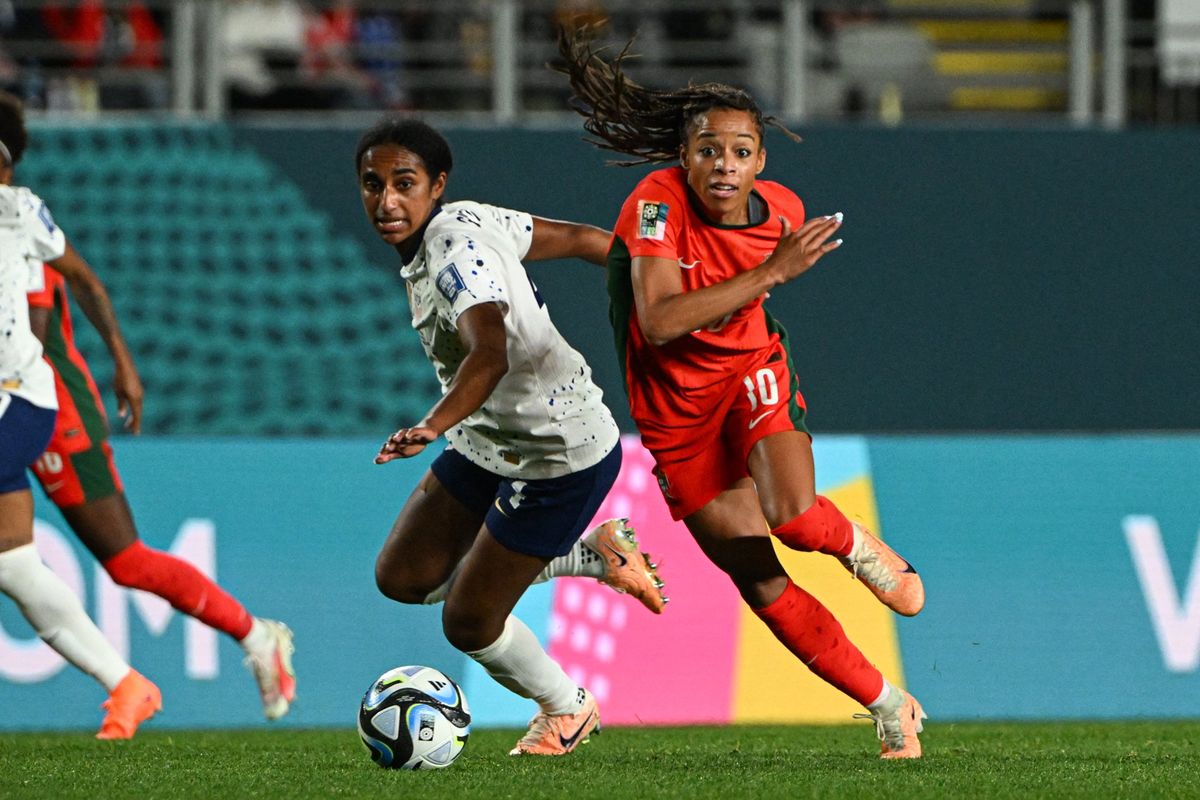Can the USWNT fix its World Cup problems?

One could be forgiven for getting a good night’s sleep, searching the score from the U.S. women’s national soccer team’s 0-0 draw with Portugal on Tuesday and assuming the Americans were unlucky not to take all three points from their World Cup group-stage finale.
The European underdogs didn’t put a single attempt on target, after all, while the United States outshot them 15-5 and claimed a 6-1 advantage on corner kicks. A classic case of the heavyweight simply failing to land a knockout blow against a scrappy opponent, right?
But while most of America was sound asleep, the U.S. squad playing in Auckland, New Zealand, looked sluggish and uninspired. Their tempo on the ball was lacking. An attack short on cohesion and confidence could only muster half-chances. When Portugal substitute Ana Capeta rang the post in second-half stoppage time, coming inches away from sending the two-time defending champions to an unthinkable group-stage exit, it was nearly a deserved winner for a team that looked tactically and technically superior.
After the Netherlands thrashed Vietnam 7-0 to comfortably win Group E, the Americans advanced as the group runner-up and probably put themselves on a collision course with Sweden – No. 3 in FIFA’s rankings – in the round of 16 on Sunday in Melbourne, Australia.
So what is wrong with the top-ranked U.S. squad? And how can coach Vlatko Andonovski fix it? Let’s break it down:
Trouble in the middle
Andonovski’s 4-3-3 formation, featuring two advanced midfielders in front of a single pivot, emphasizes width and verticality as the U.S. team tries to capitalize on the pace and individual skill of its wingers. It’s a reasonable instinct considering this squad boasts rising star Sophia Smith on one flank and a slew of enticing options – Lynn Williams, Trinity Rodman and Alyssa Thompson – on the other, even if Mallory Swanson’s injury absence still looms large.
The approach, however, has become all too predictable. In all three group-stage matches, the United States disproportionately funneled its attacks through the left side occupied by fullback Crystal Dunn, midfielder Lindsey Horan and Smith. But after sending 39% of its attacks down the left side in the win over Vietnam and 40% in the draw with the Netherlands, that number ballooned to 53% vs. Portugal (compared to 25% on the right side). When it came to entries in the attacking third, the United States made 14 on the left, seven on the right and just three down the middle.
This was largely the result of Portugal’s 4-4-2 diamond formation, which crowded central midfield and denied service to Andi Sullivan, the lone U.S. defensive midfielder. Playmakers Horan and Rose Lavelle, meanwhile, were largely forced to operate from wide areas – curtailing their influence, stretching the Americans’ shape and exposing them on defense. After Horan averaged 14 line breaks – passes or dribbles that advance the ball past the opponent’s defensive, midfield or forward block – in the first two games, she only had eight Tuesday. Lavelle averaged seven in her two appearances off the bench but had four over 90 minutes against Portugal.
Lackluster adjustments for USWNT
For all of the depth on this U.S. team, Andonovski has struggled to make impact substitutions beyond inserting Lavelle against Vietnam and the Netherlands as she worked her way back from a knee injury. In the draw with the Dutch, he only made that single swap as several players ran out of gas. His main adjustment against Portugal, on the other hand, was the 61st-minute addition of tried-and-tested veteran Megan Rapinoe.
But the move was a misfire. Aside from one incisive through ball to Alex Morgan, Rapinoe struggled to keep up with the pace of the game while connecting on just 8 of 24 passes and 2 of 12 line breaks. Whether Rapinoe is rusty because of the calf injury she carried into the tournament or age is finally catching up with the 38-year-old icon, she hasn’t looked like a viable contributor off the bench at this World Cup.
In a game that was screaming for a formation tweak to provide Sullivan more support, Andonovski didn’t bring on Emily Sonnett as an extra defensive midfielder until the 84th minute. Even then, she only logged a few minutes at that position before dropping to the back line as the United States clung to the draw it needed to advance – a move that nearly backfired when Capeta exposed a disorganized defense on her bid off the post.
Should Andonovski change the USWNT lineup?
Andonovski hasn’t been one to tinker during his nearly four-year tenure as U.S. coach, so don’t expect a radical personnel overhaul or major shift in formation. But there are subtle tweaks that could go a long way when the United States faces Sweden.
Changing from a 4-3-3 formation to a 4-2-3-1 – as the Americans briefly did against the Netherlands – should solidify the middle and improve linkup play. There’s a case to be made that Alana Cook should see her first minutes at center back and allow the rangy Julie Ertz to shift into defensive midfield, where she excelled at the 2019 World Cup and Olympics in 2021. Although Alyssa Naeher allowed just one group-stage goal, she didn’t make a single save over the three matches and nearly gifted Portugal a stoppage-time tally when she flailed at a cross – perhaps opening the door for backup Casey Murphy, who traded starts with Naeher at last summer’s Concacaf W Championship.
We know there will be at least one lineup change after Lavelle got booked against the Netherlands, drawing a one-game suspension. Savannah DeMelo would be the obvious replacement after she started the first two group stage games in Lavelle’s place, but Ashley Sanchez – a wily playmaker yet to make her World Cup debut – would offer a much-needed dash of creative flair. When it comes to awakening an inert American attack, Andonovski would be wise to embrace the unpredictable.